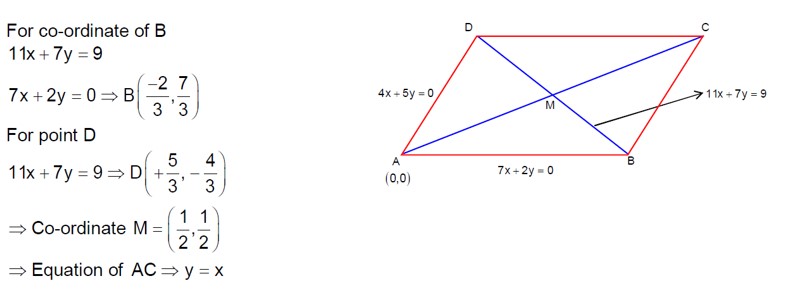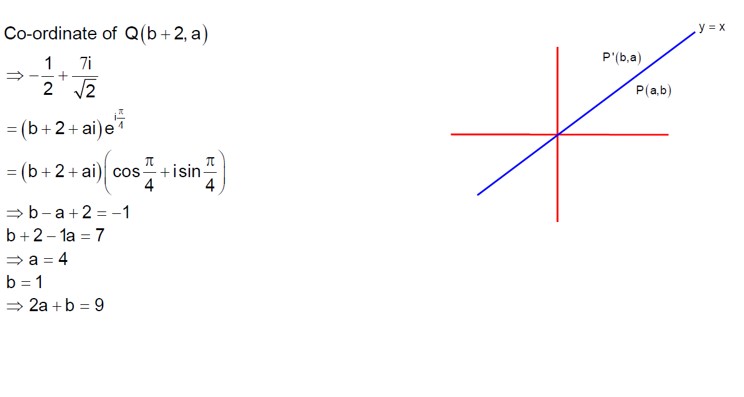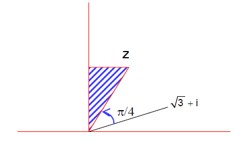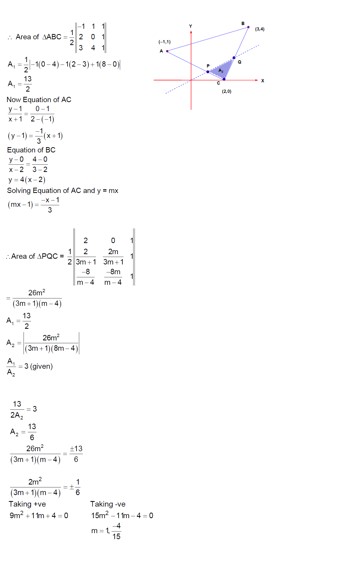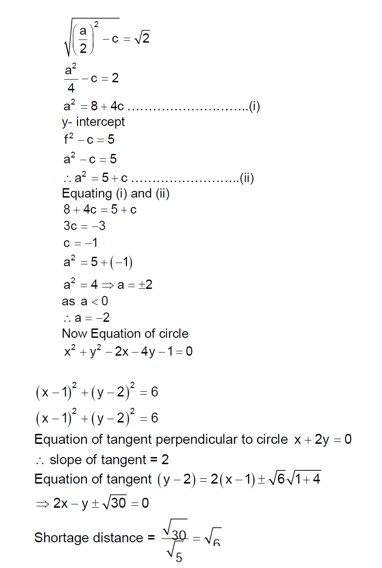Straight Lines
Get insights from 177 questions on Straight Lines, answered by students, alumni, and experts. You may also ask and answer any question you like about Straight Lines
Follow Ask QuestionQuestions
Discussions
Active Users
Followers
New answer posted
2 months agoContributor-Level 10
By using condition of tangency,
c² = a² (m² + 1)
⇒ c² = 5 [ (2)² + 1]
⇒ c² = 25
⇒ c = ±5
New answer posted
2 months agoContributor-Level 10
2x + y = 4
2x + 6y = 14
} y=2, x=3
B (1, 2)
Let C (k, 4–2k)
Now AB² = AC²
=> 5k² – 24k + 19 = 0
α = (6+1+10/5)/3 = 18/5
Now 15 (α+β)
15 (17/5) = 51
New answer posted
2 months agoContributor-Level 10
dy/dx = (ax-by+a)/ (bx+cy+a)
=> bxdy + cydy + ady = axdx – bydx + adx
cy²/2 + ay – ax²/2 – ax + bxy = k
ax² + ay² + 2ax – 2ay = k
=> x² + y² + 2x – 2y = λ
Short distance of (11,6)
= √12²+5² – 5
= 13 – 5
= 8
New answer posted
2 months agoContributor-Level 10
Parabola: y² = 4x - 20 = 4(x - 5). Vertex at (5,0).
Line: The text seems to derive the tangent equation y = x - 4. This is not a tangent to the given parabola. The standard tangent to y²=4aX is Y=mX+a/m. Here X=x-5, a=1. So y = m(x-5)+1/m.
The other curve is an ellipse: x²/a² + y²/b² = 1.
The text says x²/2 + (x-4)²/b² = 1. This assumes a² = 2.
x²/2 + (x²-8x+16)/b² = 1
x²(1/2 + 1/b²) - (8/b²)x + (16/b² - 1) = 0.
For tangency, the discriminant (D) of this quadratic equation must be zero.
D = (8/b²)² - 4(1/2 + 1/b²)(16/b² - 1) = 0.
64/b? - 4(8/b² - 1/2 + 16/b? - 1/b²) = 0.
16/b? - (7/b² - 1/2 + 16/b?) = 0.
-7/b² + 1/2 = 0
New question posted
2 months agoTaking an Exam? Selecting a College?
Get authentic answers from experts, students and alumni that you won't find anywhere else
Sign Up on ShikshaOn Shiksha, get access to
- 65k Colleges
- 1.2k Exams
- 679k Reviews
- 1800k Answers

